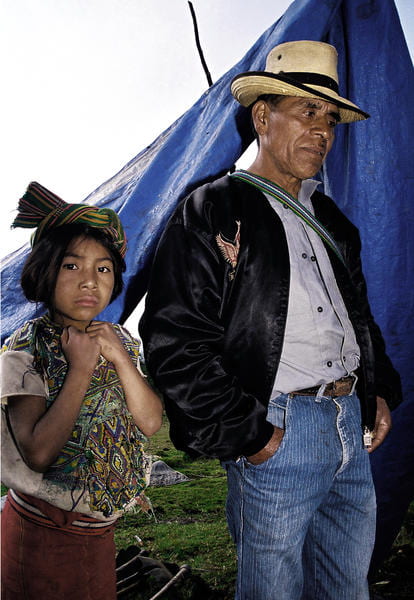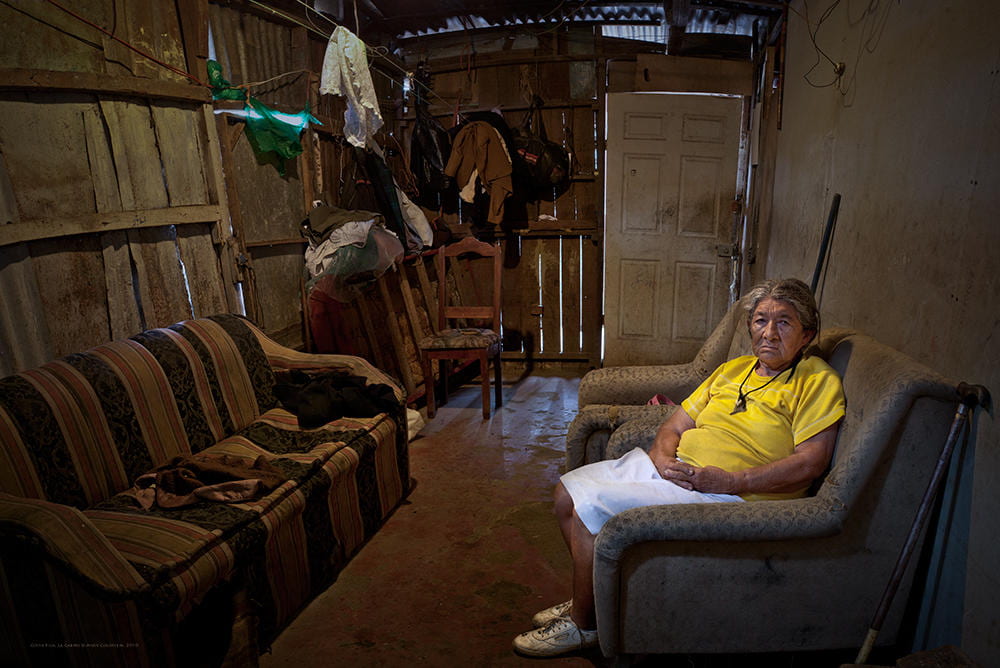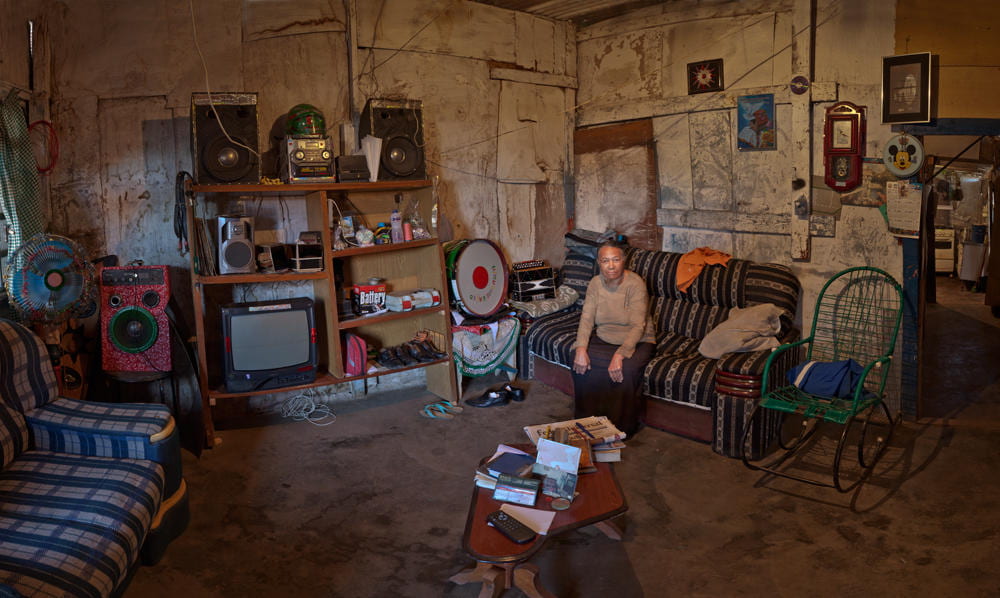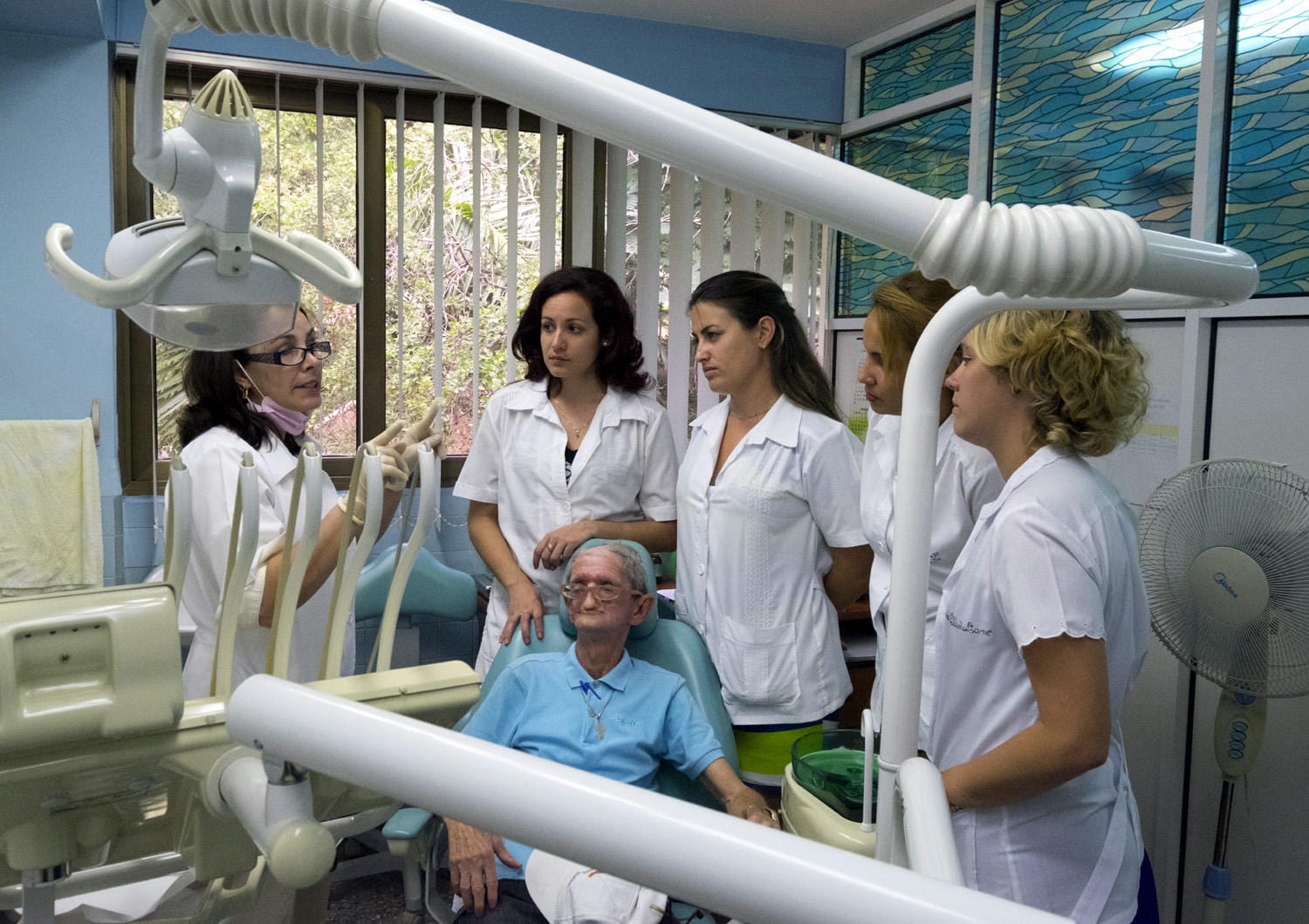Aging and Pension Reforms: A Look at Latin America
Latin America is growing older. Since the 1950s, the number of people 60 years and older is increasing in the region as longevity is expanding. For many decades, the largest portion of the population was younger than 14, but with the aging process, the size of that group has beendeclining. On the other hand, those in the middle—15 to 59 years, the “productive” segment of the population that finance those who are younger and those who are older—eventually will shrink hence making more difficult to sustain the other two groups.
In Latin America, aging has been much faster than in developed countries. In 2050, the elderly areexpected to be one out of every four people (26%), about the same as in Europe. Such fast growth means that there is less margin for error to plan ahead for the needed adjustments, and the state should play an important role to prevent or alleviate adverse consequences.
There’s a great deal of difference among the region’s countries, however. Already, one out of every five people (20%) in Cuba and Uruguay is 60 years old or more—the oldest countries in the region—, according to the Economic Commission for Latin America (ECLAC). Chile, Argentina, Costa Rica and Brazil are experiencing what ECLAC calls “accelerated aging,” in which the percentage of people 60 years old and above ranges from 13% to 16%. Colombia, El Salvador, Panama, Peru, Mexico, Ecuador, Venezuela and the Dominican Republic make up a group ECLA identifies as “moderate aging,” with 9 to 12% of its citizens 60 or older. The countries that have been the slowest to experience this aging trend, identified by ECLAC as “incipient,” are Paraguay, Bolivia, Nicaragua Haiti, Honduras and Guatemala, from 7% to 9%. This aging trend reflects both a decrease in the birth rate and an increase in life expectancy. The most socio-economic developed countries are the oldest and the least developed are the youngest.
The fact people live longer is a good thing for human beings, but it creates financial problems. Aslife expectancy increases, pensioners live and collect their pensions for more years, increasingsystem costs. Moreover, with fewer people in the middle group, a drop in the number of thoseworking and making contributions makes it difficult to finance pensions: in a young population, the ratio of active workers per pensioner may be nine to one, but in an older population, the rationmay shrink to two to one.
Pension systems and types of reforms
In general, pension systems are of two types. There’s the “public” pension, characterized by a “defined benefit” (the law sets the pension amount), “non-defined contribution” (it tends to increase through time), pay-as-you-go financing (usually there is a partial collective reserve that helps extend the long-run balance), and administration by social insurance or the state. The second type, the “private” pension usually has “defined contribution” (percentage fees paid uponwages should not change through time), non-defined benefits (the pension amount depends on the contributions paid and the investment yields), fully-funded financing (capitalization based on individual accounts owned by the insured), and private administration (by competing, profit-seeking companies).
Let’s give an example. José Pérez is insured in a public pension system. He pays a monthly contribution based on his salary (the employer usually contributes too), which often increases with the aging of the population and the program itself. These contributions go into a pot, collectively owned by all those covered by the pension. The pension calculation is regulated in detail by law (often setting a minimum and maximum figure). Conversely, María González isinsured in a private pension system. She pays a contribution based on her salary (her employer may or may not contribute). These contributions go into an individually-owned account that is invested by the private corporation (AFP) that manages the fund. At the time of retirement, shereceives a pension based on the amount in the account. Many in Latin America experience a mix of the two systems.
With the increase in older Latin Americans, there’s much talk of pension reform. These reforms could be “parametric,” with some changes in the public system such as raising the retirement ageto prolong the life of the pension plan. The reforms could also be structural ones that do notpreserve a public system but change it, totally or partially, into a private system. Re-reforms change a privatized system either improving it or turning it back to public.
Structural reforms and re-reforms
Eleven Latin American countries. beginning with Chile, implemented structural reforms from 1980-2005. There are three diverse models. Chile, Bolivia, Mexico, El Salvador and Dominican Republic, in that chronological order, adopted a substitutive system in which the public system was replaced entirely by a private system. Peru and Colombia adopted a parallel system in whichthe public system continued and a new private system was created, allowing both to compete. Uruguay, Costa Rica and Panama developed a mixed model, in which the public system was converted into the principal mainstay with the establishment of a private system as a secondarybackup.
Structural reforms improved some key aspects of public systems, but the negative effects outweighed the advantages and were contrary to many of the reformers’ promises (for details,see C. Mesa-Lago, Reassembling Social Security: A Survey of Pension and Health Care Reforms in Latin America, 2014).
Between 2008 and 2010 three countries rolled back their private pension systems. Chile kept the private system but with substantial modifications that addressed some of the problems.Argentina closed the private system, transferring all its clients and funds to the public system.Bolivia nationalized the private system, but guaranteed the existing individual accounts. In 2017, El Salvador joined the group but its re-reform focused on reducing the fiscal deficit, leaving other key aspects untouched. The Dominican Republic, Panama and Peru have unsuccessfully tried to pass re-reforms.
The structural reforms increased retirement ages in Argentina, Bolivia, Chile, Peru and Uruguay (for women); in Colombia, the age was raised in the public system but not in the private one. Costa Rica, Dominican Republic, El Salvador, Mexico and Panama left retirement ages unchanged. The Bolivian structural reform increased retirement ages 10 years for men and 15 years for women, to 65 for both, very high in view of the quite low life expectancy; the re-reform reduced ages to 58 for both sexes. Years of contribution were also expanded in six countries. Re-reforms in Argentina and Chile left ages unchanged.
Countries that have not raised the age for retirement and those with a very young retirement age face a financial and actuarial imbalance because projected revenue will be lower than projectedexpenditures. Chile has taken measures to avoid this situation. Argentina did not conduct actuarial valuations either before or after the re-reform. Bolivia allegedly took stock of this imbalance, but never revealed the results. The little data that exist from both countries indicate a serious actuarial disequilibrium (in 2018, Argentina increased, voluntarily, retirement ages by five and three years for men and women respectively). Costa Rica had a dispute about the actuarial equilibrium of the public system and, in 2018, increased contributions by one percentage point and began a discussion about raising the retirement age. In Uruguay, expenditures rose because of benefits expansion, aggravated by the second most aged population in the region. A 2020-2065 projection forecasts a decline in fiscal transfers in the mid-term but rising thereafter with the deficit peaking at 24% of Gross Domestic Product (GDP). El Salvador re-reform and Peru’s proposal were not based on actuarial valuations. Panama latest actuarial study has not been released.
In 2015, a presidential commission in Chile approved 58 recommendations, including raising women’s retirement age to 65 on parity with that of men, and the introduction of an employer contribution of 4% of the wage bill. Regrettably, the recommendations were in limbo for one year and a million Chileans demonstrated in the street against the proposals, demanding better pensions, but opposing the age increase (in November 2018, Chile’s new president announced the increase in the contribution).
How pensions are calculated
The system administrator calculates the pension. In a public system, those eligible for benefitsmust meet both the legal retirement age and the required years of contribution. An average of the years of contribution (either the entire working life or a fixed period, such as 20 years) is calculated. Upon that average, a percentage is applied (“replacement rate”), resulting in theamount of the pension. In a private system, those who receive benefits usually don’t have to reachthe retirement age or have completed years of contribution if the sum in the individual account is sufficient to finance a minimum pension. The pension is estimated based on the fund accumulated in the account and mortality tables that determines the pensioner’s estimated life span.
Policies to deal with benefits for the aging vary according to the pension system. A public system requires a reform that is financially balanced (annual revenue should be higher than annual expenditure) and in actuarial equilibrium in the long run (projected revenue should matchprojected expenditures). As expenditures rise, revenue must be increased also; otherwise there will be no funds to pay pensions. To reduce expenditures, retirement ages should be raised or contributions increased or benefits cut or a combination of all these measures. Theoretically, private systems have “defined contribution” but, in practice, they are also affected by aging: as life expectancy increases, the sum accumulated in the individual account becomes insufficient to finance the additional years in the life span, thus requiring similar measures than in public systems. Policies to cope with benefits for the aging are very difficult to implement politically because they have a short-term negative impact on those covered even if the reforms help them to pay their pensions in the long run.
Retirement age and pensions
Generally, retirement ages should be adjusted to the degree of aging: the oldest countries should have the highest ages and the youngest countries the lowest ages, but the table showsotherwise: Cuba (the oldest) and Honduras (the youngest) have the same years of retirement. The type of system could make a difference because, as noted, structural reforms increased retirement ages in several countries. Currently, Costa Rica, Mexico and Peru (all private) have the highest ages; nevertheless Brazil (public) have the same ages as Chile (private). Many countries still need to adjust their retirement ages.
Ranking of counties by aging and retirement ages, 2017
|
Degree of Aging |
Countries | Type of system | Cohort 60 years and over (%) | Retirement age | |
| Man | Women | ||||
| Highest | Cuba | Public | 20 | 65 | 60 |
| Uruguay | Mixed | 20 | 60-70 | 60-70 | |
|
Accelerated
|
Chile | Private | 16 | 65 | 60 |
| Argentina | Public | 15 | 65 | 60 | |
| Costa Rica | Mixed | 14 | 65 | 65 | |
| Brazil | Public | 13 | 65 | 60 | |
|
Moderate
|
Colombia | Parallel | 12 | 62 | 57 |
| El Salvador | Private | 12 | 60 | 55 | |
| Panama | Mixed | 11 | 62 | 57 | |
| Ecuador | Public | 10 | Various | ||
| Dominican R. | Private | 10 | 60 | 60 | |
| Mexico | Private | 10 | 65 | 65 | |
| Peru | Parallel | 10 | 65 | 65 | |
| Venezuela | Public | 10 | 60 | 55 | |
|
Incipient |
Bolivia | Public | 9 | 58 | 58 |
| Paraguay | Public | 9 | 60 | 60 | |
| Nicaragua | Public | 8 | 60 | 60 | |
| Guatemala | Public | 7 | 60-62 | 60-62 | |
| Haiti | Public | 7 | 55 | 55 | |
| Honduras | Public | 7 | 65 | 60 | |
Gender and pensions
In half of the countries, the retirement age for women is lower than that of men, five years in most cases. Women generally outlive men by ten years or longer, but their contribution period is five years shorter, a disparity that significantly increases financial-actuarial costs. The effects on women are diverse depending on the type of pension system. Public ones often have social solidarity (transfers among generations, genders and income groups) so the lower female pension is somewhat increased by such transfers (although women’s pension are still lower thanthat of men).
Private systems lack solidarity because the individual account is owned by the insured person and there are no transfers of funds. In addition, women are normally paid lower salaries than men for the same task and thus contribute less. Moreover, women often leave their jobs to raise children, reducing even more their contributions and individual accounts. Finally, the pension is calculated based on the amount in such account and mortality rates differentiated by sex. As a result, female pensions in private systems are considerably lower than that of men.
The difference in gender retirement ages is frequently justified as a compensation for unremunerated services by women at home. However, such inequality in sharing domestic tasks should not be corrected by the pension system but by a change in men’s behavior. Another way to tackle this problem is by the state to grant the women some remuneration for the work they do. For instance, Chile’s pension re-reform granted women a voucher for every child born alive.The voucher is deposited in the individual account, earns interest and is collected at the time of retirement. A parametric reform in Uruguay provided a year of contribution to women for each child born alive.
Reforms of public systems
Currently, eleven Latin American countries have public systems. Unfortunately, because they lack an international association (like all private systems) that annually publishes changes in legislation and comparable statistics, less information is available. The International Labor Organizationreports on those systems but with not with much frequency.
Brazil modified the parameters of its pension systems for private-sector workers and for civil servants in 1999 and 2003, respectively. Another Brazilian reform in 2015 gradually increased the pension formula that combines years of age and contributions, from 85 for women and 90 for men in 2018 to 90 and 100 respectively in 2026. The actuarial deficit has been reduced but not eliminated.
Cuba has the most aged population in Latin America. In 2011, the number of people in the labor force began to decline. For many years now, the system has endured a significant and growing financial deficit (that peaked at 40% in 2008) financed by the state. That year a parametric reformwas passed that increased ages of retirement by five years for both sexes (now 60 for women, 65 for men), raised employer’s contributions by two percentage points and introduced workers’ contributions. These policies have alleviated the financial deficit in the short run but changes have not been sufficient and the actuarial disequilibrium will grow.
In Ecuador, a parametric reform in 2015 left the retirement ages untouched; contributions in the three major insured groups were standardized but left unchanged in the separate schemes.
Venezuela’s economic crisis has resulted in a GDP decline of 50% and hyperinflation in 2018 was one million percent, hence pension reserves have practically disappeared and the value ofpensions plunged dramatically. Ages of retirement are among the lowest in the region and the country is in the moderate-aging group, but life expectancy is estimated to have decreased in the last three years.
In Guatemala, Haiti, Honduras, Nicaragua and Paraguay, retirement ages are very low (55 to 62 men and women, with the exception of the Honduran retirement age of 65 for men). However, aging is incipient and financial-actuarial imbalances are looming.
Nicaragua has the fastest growing aging in the group, with a retirement age of 60 for both sexes, the lowest retirement age in the region with the exception of Haiti. In the last five years, the financial deficit has steadily grown and the reserve is projected to be exhausted in 2019. To extend the life of the system, a 2018 law increased contributions by seven percentage points(becoming the highest in Latin America) and reduced pensions by 5%. These measures provoked massive demonstrations requesting the annulment of the law; the president eventually conceded but too late, as the protests had become a national movement against him.
Age increase vis-à-vis system bankruptcy
Many countries in the world have been increasing retirement ages in tandem with the aging process, among them United States, United Kingdom, Germany, France, Italy, Belgium, Denmark, Netherland, Finland, Australia, South Korea, Spain, Slovakia, Hungary, Portugal, Iceland, Lithuania, Latvia, Estonia, Croatia, Greece, Bulgaria, Morocco, Madagascar, Curacao, St. Maarten, Kazakhstan and Belarus. The large majority of these are the most developed and aged countries, but five are developing countries, in the accelerated, moderate and incipient aging groups.
In most cases, the age of retirement has been increased gradually or in two stages; it generally goes up between two and five years. Because women frequently have a lower retirement age,the increase is higher for women and frequently in two stages. For instance, 31% of the reforms increased only the retirement age for women, mostly from five to eight years. In some countries, after the retirement age has been raised, it then has been tied to subsequent increases in life expectancy. A few countries limit the age increase to new entrants in the labor force or to those born in the future. The number of countries who are raising retirement ages is growing: 38% of the reforms since 1995 started in 2017-2018. In several countries, the change in age has been difficult due to strong political opposition, as we have seen recently in Greece.
Most Latin American countries need to raise retirement ages, particularly for women, as I’ve demonstrated here. If this is not done, actuarial deficits will worsen and some countries will face financial imbalances (the latter is already happening in a couple of countries), the system will go bankrupt and won’t be able to pay pensions.
The state must do the task to avoid huge fiscal deficits and system bankruptcy. The following are suggestions that need to be confirmed by actuarial studies: in the oldest group, Cuba should increase ages, particularly of women, whereas Uruguay should augment the minimum retirementage; in the accelerated group, Chile and Argentina (probably Brazil) should equalize the retirement ages for women and men; in the moderate group, the Dominican Republic and Venezuela should do the same thing, and in the incipient group, Bolivia and Nicaragua should raise ages by at least two years for both sexes.
Education of the insured and the population as well as a wide social dialogue among all relevant sectors are essential to overcome short-sighted political resistance.
Related Articles
Video Interview with Flavia Piovesan
Flavia Piovesan is a member of the Inter-American Commission on Human Rights, Professor of Law at the Pontifical Catholic University of São Paulo and 2018 Lemann Visiting Scholar at the…
Aging: Editor’s Letter
There is no smell of pungent printers ink permeating my office. My interns—Sylvie, Isaac and Marc—are not scrambling to find FedEx boxes to send out ReVista issues to authors and photographers all over the world. I cannot feel the silken touch of the printed page…
A Story of Agricultural Change
Francisca Hernández García, 92, lives in San Miguel del Valle, a town of around 3,000 inhabitants in the Central Valleys of Oaxaca, an hour east of the capital city. She is one of the few remaining…










